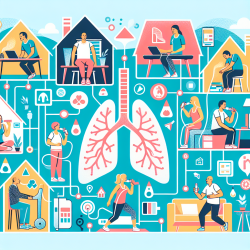Introduction
The COVID-19 pandemic has significantly impacted the educational landscape, prompting schools to adopt various health and safety measures, including mask-wearing. A recent study titled "Return to school and mask-wearing in class during the COVID-19 pandemic: Student perspectives from a school simulation study" offers insights into students' experiences and the psychological impacts of these measures. This blog aims to help practitioners enhance their skills by implementing research findings and encouraging further exploration of the topic.
Understanding Student Perspectives
The study involved a school simulation exercise where students were randomized into groups with different masking requirements. Key findings revealed that while 95% of students looked forward to returning to in-person schooling, older students reported that mask-wearing interfered with peer interaction and understanding teachers. Notably, students not required to wear masks expressed more concern about contracting COVID-19.
Implications for Practitioners
For educators and therapists, these findings underscore the importance of addressing both the psychological and practical aspects of mask-wearing in schools. Here are some strategies to consider:
- Enhance Communication: Use clear body language and tone of voice to compensate for the lack of facial expressions. Encourage students to articulate their thoughts and feelings clearly.
- Foster Social Interaction: Create opportunities for students to interact in safe environments, perhaps through outdoor activities where masks may not be necessary.
- Address Anxiety: Recognize that parental anxiety significantly influences child anxiety. Providing resources and support to parents can help mitigate these effects.
Encouraging Further Research
The study highlights the need for ongoing research into the long-term impacts of mask-wearing and other public health measures on children's mental health and academic performance. Practitioners are encouraged to explore these areas further, considering variables such as socioeconomic status and parental education.
Conclusion
By integrating these research insights into practice, educators and therapists can better support students during these challenging times. Continued exploration and adaptation of strategies will be crucial in fostering positive outcomes for children's mental health and educational experiences.
To read the original research paper, please follow this link: Return to school and mask-wearing in class during the COVID-19 pandemic: Student perspectives from a school simulation study.










